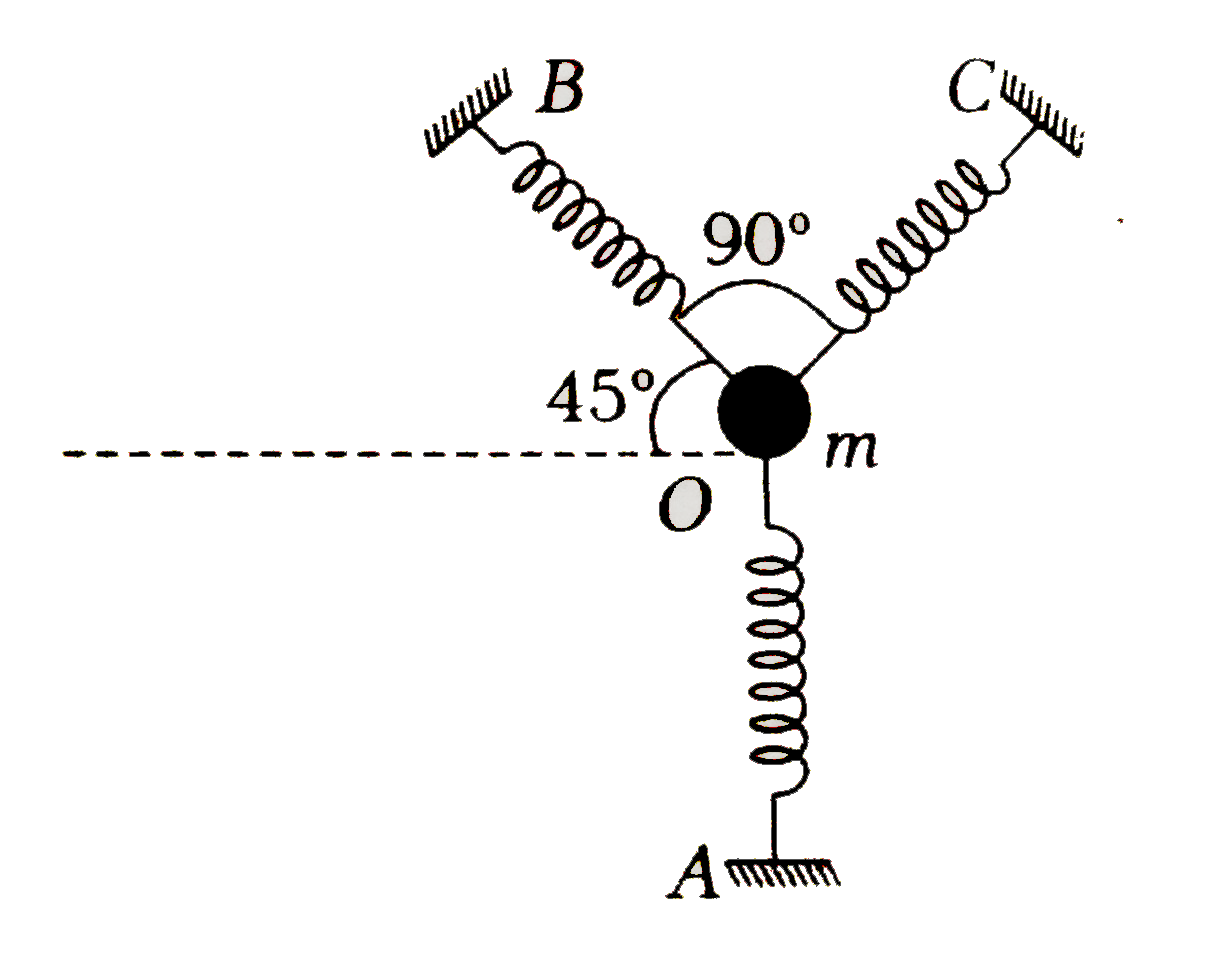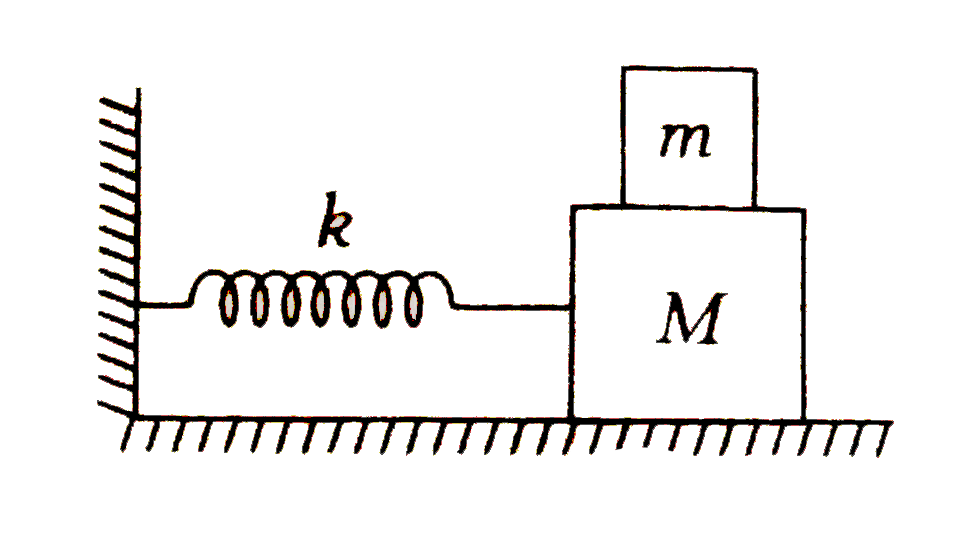A mass m, connected to a horizontal spring performs SHM with amplitude A. While mass m, is passing through mean position, another mass m, is placed on it so that both the masses move together with amplitude A,. The ratio of
[m1m1+m2]12
[m1+m2m1]12
[m2m1+m2]12
[m1+m2m2]12
The correct Answer is:A
Potential energy of oscillating mass is given by PE=12kx2
When only one block is oscillating at x=A
Emax=12KA2 and at mean position x=0. So, E=0
∴Aα1√m
When mass m2 is placed on top of the mass m. Then, total mass is (m1+m2) and E=0 at this point, as x = 0. lt brgt When they reaches at x = A,
When they reaches at x = A,
then A1∝1√m1+m2
Dividing Eq. (ii) by Eq. (i),
A1A=(m1m1+m2)12
Topper's Solved these Questions
Similar Questions
A mass m1=1kg connected to a horizontal spring performs S.H.M. with amplitude A. While mass m1 is passing through mean position another mass m2=3kg is placed on it so that both the masses move together with amplitude A1. The ratio of A1A is (pq)1/2, where p and q are the smallest integers. Then what is the value of p+q?
View SolutionA mass M attached to a horizontal spring executes SHM with an amplitude A1. When mass M passes through its mean position a smaller mass m is placed over it and both of them move togther with amplitude A2. Ratio of (A1A2) is:
View Solution
Knowledge Check
A mass m1 connected to a horizontal spring performs a S.H.M. with an amplitude A. While the mass m1 is pas"sin"g through the mean position, another mass m2 is placed on it so that both the masses move together with amplitude A1. The ratio of A1A is (m2<m1).
A[m1m1+m2]1/2B[m1+m2m1]1/2C[m2m1+m2]1/2D[m1+m2m2]1/2A mass M, attached to a horizontal spring, excutes SHM with a amplitude A1. When the mass M passes through its mean position then a smaller mass m is placed over it and both of them move together with amplitude A2, the ratio of (A1A2) is :
AMM+mBM+mMC(MM+m)1/2D(M+mM)1/2A mass (M), attached to a horizontal spring, executes S.H.M. whith amplitude A1.Whenthemass(M)passesthroghitsmeanpositionthenshal≤rmass(m)isplacedoveritand⊥hofthemmove→≥therwithamplitudeA_(2). The ration of.
A(a) M+mMB(b) M(M+m)12C(c ) (M+mM)12D(d) MM+m
A horizontal spring block system of mass M executes simple haormonic motion. When the block is passing through its equilibrium position, an object of mass m is put on it and the two move together. Find the new amplitude and frequency of vibration. Given, k is the spring constant of the system.
View SolutionA block of mass M is lying on a frictionless horizontal surface and it connected to a spring of spring constant k, whose other end is fixed to a wall, system executes simple harmonic motion of amplitude A0, when the block is passing through its equilibrium positions, an object of mass m is put on it and the two move together with a new time period T and amplitude A. Find the value of T and A in terms of given constants.
View SolutionA horizontal spring block system ( mass m_2 spring constant k) is oscillating on a smooth surface with amplitude A. If at the mean position an identical block is kept on it so that they move together after what is the new amplitude?
View SolutionA horizontal spring-block system of mass 1kg executes SHM of amplitude 10 cm. When the block is passing through its equilibrium position another mass of 1kg is put on it and the two move together.
View SolutionA mass M is attached to a horizontal spring of force constant k fixed one side to a rigid support as shown in figure. The mass oscillates on a frictionless surface with time period T and amplitude A. When the mass M is in equilibrium position, another mass m is gently placed on it. When will be the new amplitude of ocillation?


View Solution
